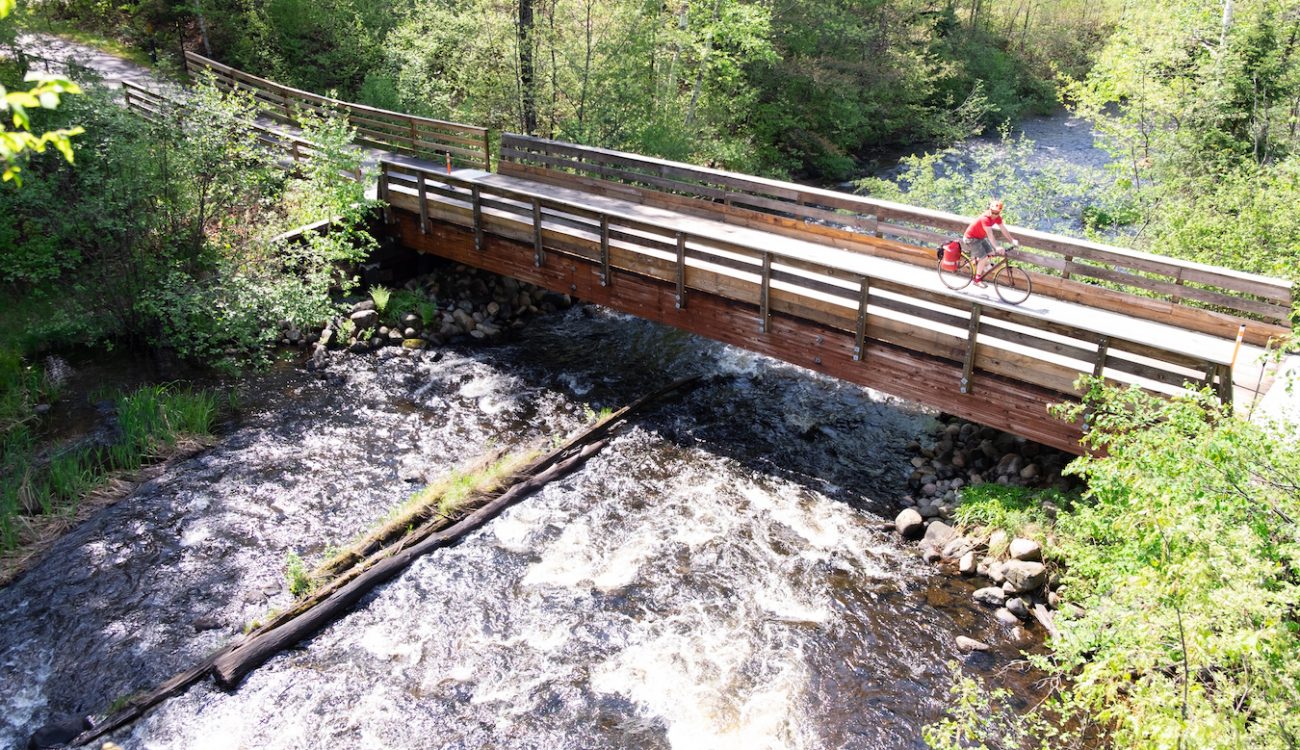A recent economic impact study by the Outdoor Industry Association shows cycling contributes $1.4 billion dollars to our state coffers and provides more than 13,000 jobs.
Story and photos by Dave Schlabowske
As a proud son of Wisconsin, I’m quick to brag about my home state to anyone who will listen. Maybe I ride my bike so much that I’m usually hungry, but my list of superlatives typically starts with the first hamburger (Seymour), the ice cream sundae (Two Rivers) and malted milk (Racine). But as an avid cyclist, my home state has a lot to be proud of:
- First rail trail in the nation: Elroy Sparta Trail
- Second rail trail in the nation: Tuscobia Trail
- Largest state mountain biking race series: Wisconsin Off-Road Series (WORS)
- Largest competitive multi-day road cycling event in the U.S.: Tour of America’s Dairyland (ToAD)
- Epicenter of the nation’s bicycle industry: Answer, Borah Teamwear, Fyxation, Hayes, Manitou, Pacific, Schwinn, Sun Ringle, Trek, Waterford, Wheelsmith, and Wyatt
- And we can’t forget to thank our dairy industry for our amazing network of low-traffic paved town roads perfect for cycling.
A recent economic impact study by the Outdoor Industry Association shows cycling contributes $1.4 billion dollars to our state coffers and provides more than 13,000 jobs. In 2018, the City of La Crosse published their own economic impact study. The study predicted that completing an additional 40 miles of projects recommended in the City of La Crosse 2012 Bicycle and Pedestrian Master Plan could result in nearly $300 million of economic benefits to the local economy.
With that sort of return, it is no wonder that so many of our local communities are investing in bicycling. And while Boulder Junction has deservedly held the trademark as the Musky Capital of the World since 1971, their amazing and unique Heart of Vilas County Trails and nearby WinMan mountain bike trails mean you’re apt to see as many cars in town with bike racks as pulling fishing boats.
My mom is from Park Falls (Ruffed Grouse Capital of the World) and when we went Up North on our family vacations, all we brought was bug spray, fishing rods and tackle boxes. The bikes stayed at home. These days, families are looking for more, according to Theresa Smith, Executive Director of the Boulder Junction Chamber of Commerce.
“We’ve held the trademark as the Musky Capital of the World since 1971. I was a kid back then, and when we came up here, we would go out in the boat early, fish for a couple hours, come in for breakfast, play for a little bit, and then go back out again,” Smith said..
“Over time, people’s interests have changed and we have tried to adapt,” she added. “People still come for the great fishing, but they also want to go shopping, go out to eat and travel around the county to visit different communities. There are a lot of hard working communities in Vilas County that are constantly working to attract visitors to the area and give them a vacation experience they will enjoy and remember.”
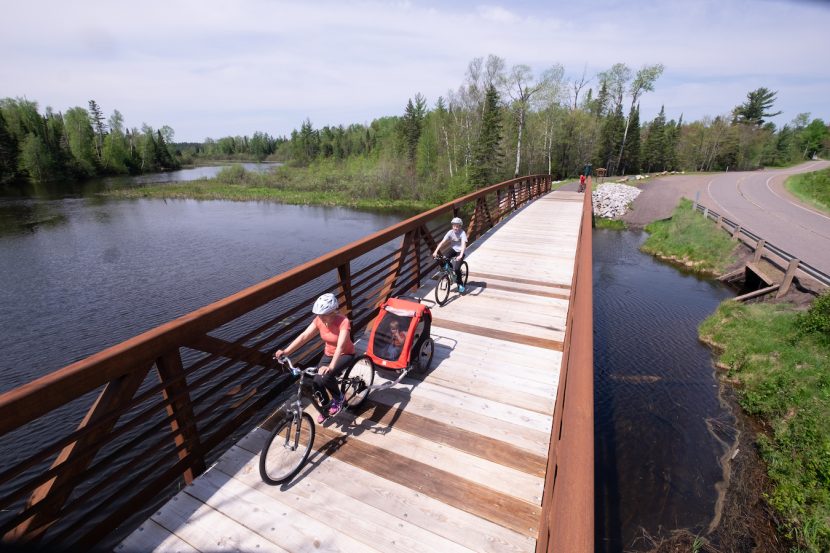
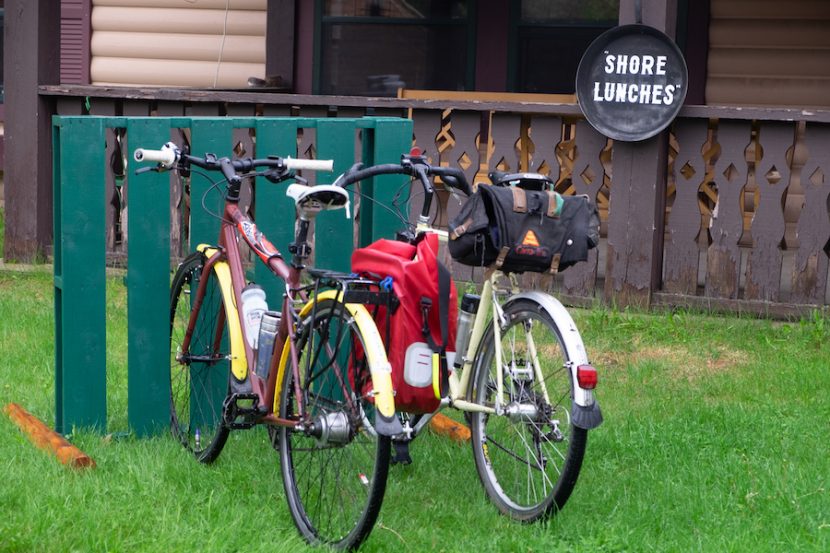
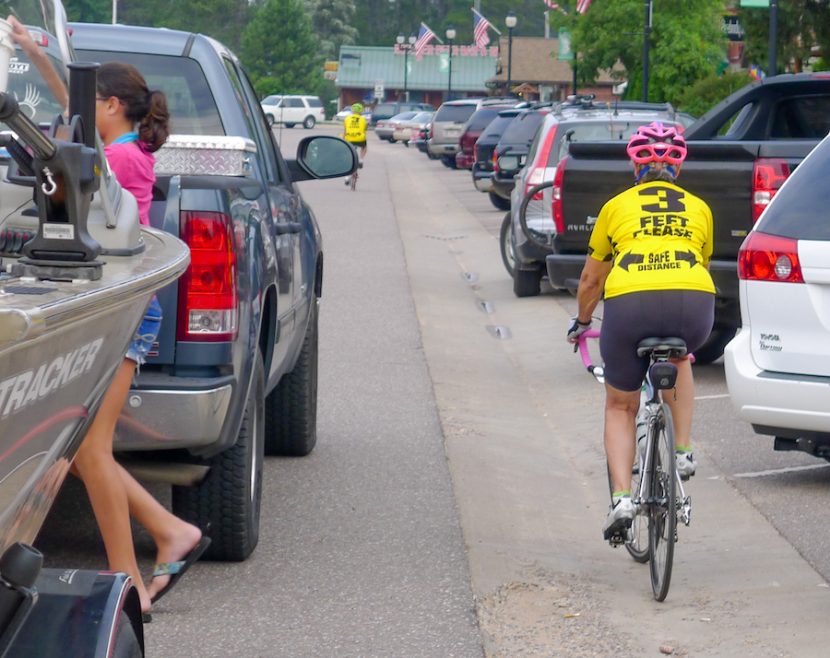
The Heart of Vilas County Bike Trail started in 1994 with a little loop around the baseball diamond. Today the 52-mile off-road paved trail connects four communities in Vilas County, as well as Mercer in Iron County. Unlike many trails built on former flat, straight railroad beds, the Heart of Vilas County Trails were built parallel to the rolling area roads, curving into forests and crossing rivers and marshes.
Want great mountain biking? Now you can ride the paved Heart of Vilas County Trails right to the WinMan trailhead. WinMan had some of the first progressive, machine-built mountain bike trails in Wisconsin, and they now see upwards of 10,000 users a year between bikers, hikers, skiers and snowshoers. Mountain bikers make up about 70% of those trail users, according to Rick Gering, who helped open the trails on family land back in 2011.
“The neatest thing is that we keep having people come up to us at the trails and tell us they now come up here more often because of the trails,” Gering said proudly. “People tell us all the time that they used to just come up once or twice a year, but now they come up four or five times to ride the trails.”
Gering also echoed Smith’s comments about how the trails bring the different communities together. “The communities now have a common shared interest. The trails connect us, and we even have an annual meeting on the Friday after Christmas to get together and talk about our trail system.”
To the west a bit, the giant 143-foot-long fiberglass musky at the Freshwater Fishing Hall of Fame certainly remains the most visible landmark as you drive through Hayward. And while the fishing is also really great over there, the mountain bike and nordic ski trails have made the Cable/Hayward area a mecca for silent sports users.
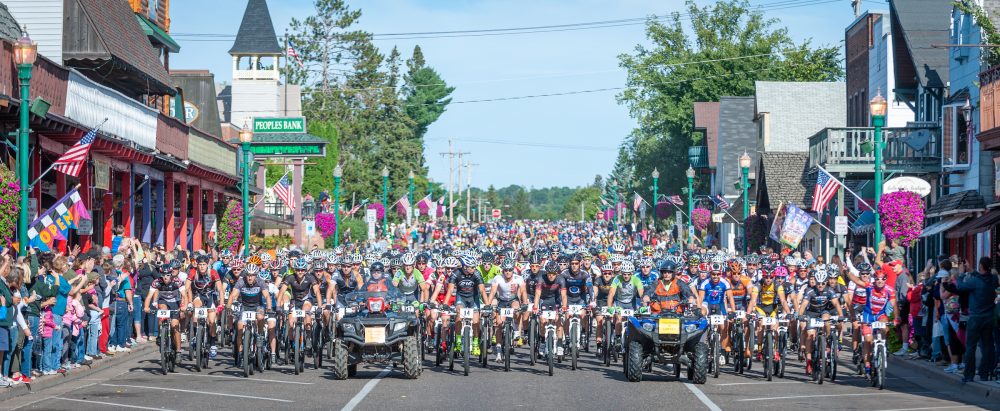
In order to better leverage their 120-mile network of single track mountain bike trails and endless gravel road assets, this year the volunteers at the Chequamegon Area Mountain Bike Association (CAMBA) completed more than 400 surveys of trail users. CAMBA is partnering with the University of Wisconsin-River Falls Survey Research Center to conduct a market research study about mountain biking in the Hayward, Cable and Bayfield areas.
Joe Vadeboncoeur, who volunteers as the new president of the CAMBA Board of Directors, told me the goal of the survey is to help the CAMBA become a better asset to the community and area businesses.
“We want the CAMBA trails to better serve our local community and local businesses, so we held a bunch of town hall meetings to help us draft the survey questions. We want CAMBA to serve as a kind of free consultant to help local businesses that want to attract more trail users,” he said. “How do we use those trails to better engage with the community and increase their value as a community asset? Awareness is the first thing, so we need to know who is on the trails, where are they from, where do they stay, where do they eat while they are here, and how much do they spend.”
Vadeboncoeur added that it is really interesting what you learn when you volunteer to ask someone 20 questions at a trailhead. He said people really wanted to share more about what CAMBA and the community could do better with the trails and what they are looking for in the community. “I bet 98% agreed to answer further questions, so we plan to follow up with more detailed questions.”
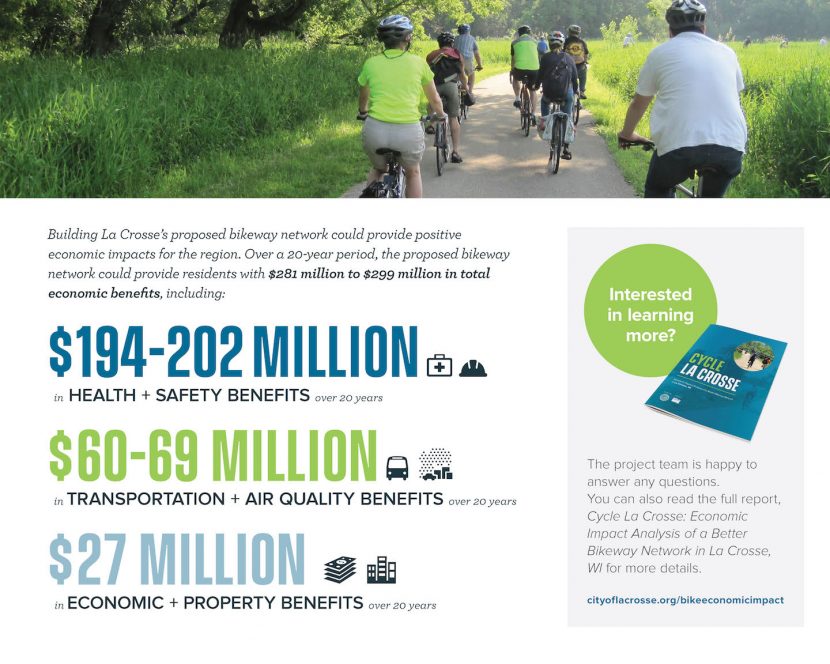
La Crosse has made a lot of investments in new on-street bikeways, bike parking facilities, mountain bike trails, and even a pump track. But the La Crosse bike plan calls for further investments to complete the network of on-street bike lanes and trails. The did an economic impact study to consider if those investments would have a positive return, and the results are clear. The community would benefit financially if the proposed bikeway network was completed.
Urban and suburban communities have also been working to make bicycling safer, more attractive and convenient. The Village of Wauwatosa East Tosa North Avenue Plan is a great success story of how adding high-visibility green bike lanes was part of a successful revitalization plan for a 16-block commercial corridor on West North Avenue, from 60th to 76th Streets.
Ed Haydin is an East Tosa resident and principal at ARC-INT Architecture, an architecture and planning firm that has a reputation for designing catalytic placemaking projects. He approached me before a consultant was even hired to get some feedback about the project goals. Ed is also an avid cyclist, but I remember one of the first things he said was, “Dave, you have to see past the green bike lanes and understand this is not about bikes. This is about economic development, making our neighborhood a better place to live, and increasing property values.”
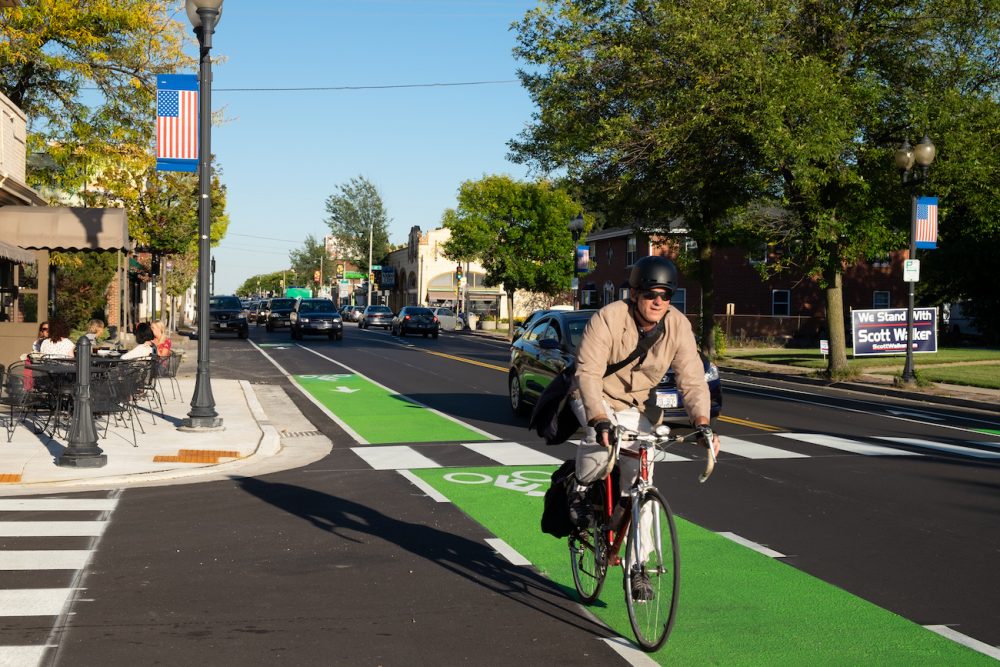
The project was transformational. The redesigned street with green bike lanes and pedestrian safety improvements quickly saw millions of dollars in renewed investments by existing and new businesses. East Tosa is now one of the hottest shopping and dining destinations in the Milwaukee area.
Municipalities all across Wisconsin are seeing similar returns on their investments in cycling. Green Bay will forever be known as the home of the Packers, but they now plow their bike trails in the winter and have one of the most vibrant cycling scenes in the state. Community volunteers for Bicycle Friendly West Bend are adding bike parking and repair racks in business areas, organizing Bike to School days and improving community connections to their trails.
Thanks in part to their massive investment in new mountain bike trails and the great road riding, People for Bikes selected Wausau as the Best Small City for Cycling in the nation in 2018. And Wisconsin’s biggest city, Milwaukee, added four new protected bike lanes in the last year. Further south, the City of Racine just adopted a new bike plan. Janesville is adding bike lanes, building mountain bike trails and hosts the Janesville Gran Prix, a new event in the Tour of America’s Dairyland race series.
While many communities are seeing great returns on their investments in improved bike lanes, trails and by hosting cycling events, it is now more important than ever to make thoughtful investments. Trails like those in Vilas County, the new protected bike lanes in Milwaukee and the next generation MTB trails in Wausau have raised the bar for what makes a fun, safe and convenient bike ride. For the most part, elected officials and municipal planning staff seem to be responsive to community leaders and local advocacy groups. It also helps that there are now a number of professional consulting firms that specialize in plans and projects that emphasize bicycle and pedestrian improvements.
At the state level, Wisconsin has a number of serious transportation funding and priority issues to resolve, so it is nice to see so many municipalities choose to make investments in bicycling as one ingredient in a recipe for a healthy, happy, safe, and successful community.
Keep Wisconsin Biking Strong!
Wisconsin Bike Fed’s advocacy work around this issue and many others is made possible thanks to your support. Consider making a gift today!
